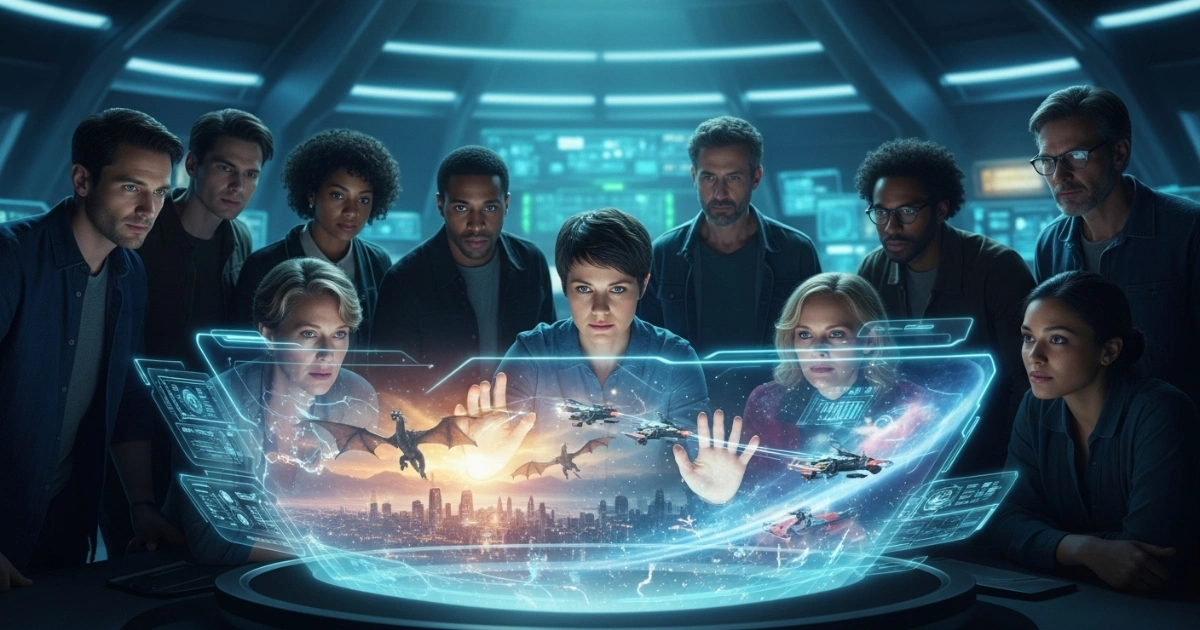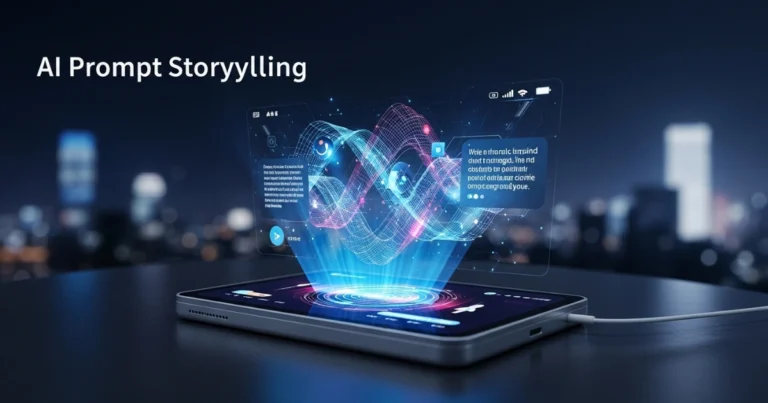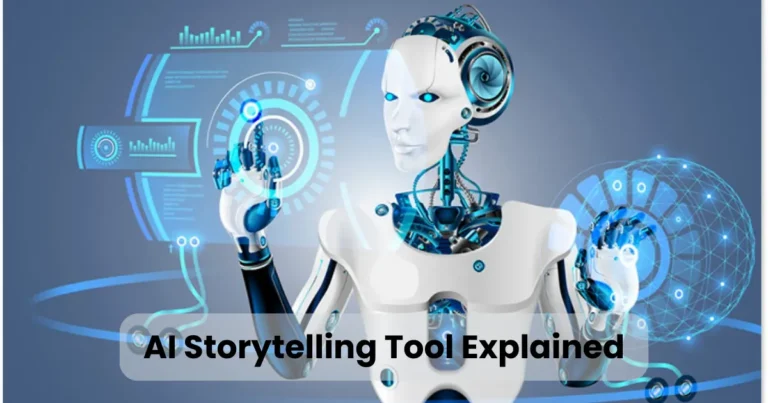Cinematic AI Storytelling: Revolutionizing Film Narratives

Contents
- 1 What is Cinematic AI Storytelling?
- 2 The Evolution of AI in Filmmaking
- 3 How Cinematic AI Storytelling Works
- 4 Benefits of Cinematic AI Storytelling
- 5 Challenges of Cinematic AI Storytelling
- 6 Tools and Platforms for Cinematic AI Storytelling
- 7 Real-World Examples of Cinematic AI Storytelling
- 8 The Future of Cinematic AI Storytelling
- 9 How Filmmakers Can Embrace Cinematic AI Storytelling
Cinematic AI storytelling is transforming the way filmmakers craft narratives, offering innovative tools to create immersive and emotionally resonant stories. As artificial intelligence (AI) advances, its integration into filmmaking revolutionizes traditional storytelling methods, enabling creators to push creative boundaries. This article dives into the world of AI storytelling, exploring its applications, benefits, challenges, and future potential. By leveraging AI, filmmakers can enhance narrative development, streamline production processes, and deliver personalized audience experiences. Let’s uncover how this technology is shaping the future of cinema.
What is Cinematic AI Storytelling?
Cinematic AI storytelling refers to the use of artificial intelligence to generate, enhance, or support narrative creation in films and visual media. Unlike traditional storytelling, which relies heavily on human creativity, AI augments the process by analyzing vast datasets, predicting audience preferences, and automating aspects of scriptwriting, editing, and even visual effects. For instance, AI can analyze successful films to identify narrative patterns or generate dialogue based on character archetypes.
Moreover, cinematic AI storytelling encompasses tools like natural language processing (NLP), machine learning, and generative adversarial networks (GANs). These technologies enable AI to craft scripts, suggest plot twists, or create realistic virtual characters. As a result, filmmakers save time, reduce costs, and explore creative possibilities previously unimaginable.
The Evolution of AI in Filmmaking
To understand cinematic AI storytelling, we must first examine AI’s evolution in filmmaking. Initially, AI played a minor role, primarily in post-production tasks like color correction or sound editing. However, advancements in machine learning and data processing have expanded its capabilities. By the early 2020s, AI began influencing pre-production and creative processes, including scriptwriting and storyboarding.

For example, tools like ScriptBook and Plotagon emerged, using AI to analyze scripts for commercial viability or generate animated stories from text inputs. These innovations marked a shift toward AI-driven creativity. Consequently, filmmakers embraced cinematic AI storytelling to craft narratives that resonate with modern audiences, blending human intuition with data-driven insights.
How Cinematic AI Storytelling Works
Cinematic AI storytelling operates through a combination of advanced algorithms and creative inputs. Here’s a breakdown of how it functions:

1. Data Analysis and Pattern Recognition
AI systems analyze thousands of films, scripts, and audience reviews to identify storytelling patterns. By recognizing what makes a story compelling—such as pacing, character development, or emotional arcs—AI provides filmmakers with actionable insights. For instance, an AI tool might suggest adding a plot twist in Act Two to maintain audience engagement.
2. Script Generation and Enhancement
Using NLP, AI can generate dialogue, plot outlines, or entire scripts based on predefined parameters. Tools like OpenAI’s GPT models or Sudowrite allow writers to input prompts, such as “a sci-fi thriller about time travel,” and receive detailed story drafts. Additionally, AI can refine existing scripts by suggesting alternative dialogue or restructuring scenes for maximum impact.
3. Visual Storytelling and Animation
AI extends beyond writing to visual elements. Generative AI tools like DALL·E or MidJourney create storyboards, concept art, or even animated sequences from text descriptions. Furthermore, AI-driven software like Runway ML can edit videos, apply visual effects, or generate realistic CGI characters, streamlining production workflows.
4. Audience Personalization
Cinematic AI storytelling also tailors narratives to specific audiences. By analyzing viewer data—such as streaming habits or social media reactions—AI predicts preferences and customizes content. For example, Netflix uses AI to recommend films and even influence the creation of shows that align with viewer interests.
In short, AI storytelling combines data-driven insights with creative tools to enhance every stage of filmmaking, from ideation to distribution.
Benefits of Cinematic AI Storytelling
The integration of AI into storytelling offers numerous advantages for filmmakers, studios, and audiences. Below are the key benefits:

1. Enhanced Creativity
AI acts as a creative partner, sparking inspiration and offering fresh perspectives. For instance, AI-generated plot ideas can push writers to explore unconventional narratives, fostering innovation in genres like sci-fi or fantasy.
2. Time and Cost Efficiency
Filmmaking is resource-intensive, but AI storytelling reduces both time and costs. AI tools automate repetitive tasks like editing, sound design, or script analysis, allowing filmmakers to focus on creative decision-making. As a result, independent filmmakers with limited budgets can produce high-quality content.
3. Audience Engagement
AI’s ability to analyze audience data ensures stories resonate with target demographics. By predicting what viewers want—whether it’s a heartwarming romance or a gripping thriller—cinematic AI storytelling creates films that captivate and retain audiences.
4. Accessibility for New Creators
AI democratizes filmmaking by lowering barriers to entry. Aspiring filmmakers without extensive resources can use AI tools to write scripts, create visuals, or edit films, making cinematic AI storytelling a game-changer for indie creators.
Challenges of Cinematic AI Storytelling
Despite its potential, cinematic AI storytelling faces several challenges. Addressing these hurdles is crucial for its widespread adoption.

1. Lack of Emotional Depth
While AI excels at pattern recognition, it struggles to replicate the emotional nuance of human storytelling. AI-generated scripts may feel formulaic or lack the authenticity that resonates with audiences. Filmmakers must balance AI’s efficiency with human creativity to maintain emotional impact.
2. Ethical Concerns
The use of AI in storytelling raises ethical questions. For example, AI trained on existing works may inadvertently replicate copyrighted material, leading to legal disputes. Additionally, overreliance on AI could reduce opportunities for human writers and artists, sparking debates about job displacement.
3. Data Bias
AI systems rely on data, which can introduce biases into storytelling. If trained on datasets with limited diversity, AI may produce narratives that reinforce stereotypes or exclude underrepresented voices. Filmmakers must ensure diverse datasets to create inclusive stories.
4. Audience Skepticism
Some viewers may resist AI-generated content, perceiving it as less authentic than human-crafted stories. Overcoming this skepticism requires transparency about AI’s role and a focus on blending human and AI creativity.
Tools and Platforms for Cinematic AI Storytelling
Several AI tools and platforms empower filmmakers to embrace cinematic AI storytelling. Here are some popular options:

- ScriptBook: Analyzes scripts for commercial success and audience appeal.
- Sudowrite: Generates story ideas, dialogue, and plot outlines using NLP.
- Runway ML: Offers AI-driven video editing and visual effects.
- DALL·E and MidJourney: Create concept art, storyboards, and visuals from text prompts.
- Artbreeder: Generates character designs and environments for films.
- Plotagon: Turns text into animated stories, ideal for prototyping narratives.
These tools streamline workflows, enhance creativity, and make cinematic AI storytelling accessible to creators of all skill levels.
Real-World Examples of Cinematic AI Storytelling
Cinematic AI storytelling is already making waves in the film industry. Here are notable examples:

1. “Sunspring” (2016)
This short sci-fi film was written entirely by an AI named Benjamin, created by filmmaker Oscar Sharp. Using an LSTM neural network, Benjamin generated a script based on sci-fi film prompts. While the dialogue was surreal, the film demonstrated AI’s potential to craft unique narratives.
2. IBM Watson’s “Morgan” Trailer
In 2016, IBM Watson created a trailer for the horror film Morgan. By analyzing hundreds of horror trailers, Watson selected scenes and edited them into a cohesive preview, showcasing AI’s ability to understand narrative structure.
3. Netflix’s AI-Driven Content
Netflix leverages AI to analyze viewer preferences and inform content creation. Shows like The OA and Stranger Things benefit from AI insights, ensuring narratives align with audience interests.
These examples highlight how cinematic AI storytelling is reshaping the industry, from experimental projects to mainstream productions.
The Future of Cinematic AI Storytelling
The future of cinematic AI storytelling is bright, with emerging trends poised to redefine filmmaking. Here’s what to expect:

1. Hyper-Personalized Content
As AI advances, it will create hyper-personalized films tailored to individual viewers. Imagine a movie where the plot, characters, or ending adapts to your preferences in real-time, enhancing engagement.
2. Virtual Actors and Worlds
AI-driven virtual actors, like those created by Epic Games’ MetaHuman, will become indistinguishable from real performers. Additionally, AI will generate entire virtual worlds, reducing the need for physical sets and locations.
3. Collaborative AI-Human Workflows
Rather than replacing humans, AI will become a collaborative partner. Filmmakers will use AI to brainstorm ideas, refine scripts, and optimize production, blending technology with human creativity for maximum impact.
4. Ethical and Inclusive Storytelling
As concerns about bias grow, developers will prioritize diverse datasets and ethical AI practices. This will lead to more inclusive narratives that represent a broader range of voices and perspectives.
How Filmmakers Can Embrace Cinematic AI Storytelling
To leverage cinematic AI storytelling, filmmakers should take the following steps:
- Experiment with AI Tools: Start with platforms like Sudowrite or Runway ML to explore AI’s creative potential.
- Combine AI with Human Creativity: Use AI as a tool to enhance, not replace, your creative vision.
- Stay Informed on Trends: Follow advancements in AI and filmmaking to remain competitive.
- Address Ethical Concerns: Be transparent about AI’s role and prioritize diverse, ethical data sources.
By adopting these practices, filmmakers can harness cinematic AI storytelling to create compelling, innovative narratives.
Conclusion
Cinematic AI storytelling is revolutionizing the film industry, offering tools to enhance creativity, streamline production, and engage audiences. While challenges like emotional depth and ethical concerns remain, the potential for AI to transform storytelling is undeniable. By embracing AI tools, filmmakers can craft narratives that resonate with modern audiences while pushing creative boundaries. As technology evolves, cinematic AI storytelling will continue to shape the future of cinema, blending human artistry with data-driven innovation for maximum impact.






